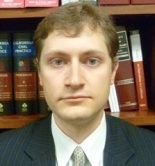
State: Calif.
Grinberg: WCAB Provides Guidance on Transferring Injured Worker Into MPN: [2020-11-19]
One might think a medical provider network is like a Facebook, only for physicians and such. But it’s not. It’s actually a method of medical control for defendants in workers’ compensation cases.

Gregory Grinberg
In the relatively recent panel decision of Vasquez v. Accurate Concrete Sawing Inc., applicant’s claim of injury was denied and he proceeded to treat on a lien basis. However, the defendant ultimately accepted the claim and wanted to move applicant into its medical provider network.
Applicant refused, arguing that defendant had lost medical control and there wasn’t a demonstrable change in circumstances to warrant forcing applicant to treat within the MPN. You might be thinking to yourself, “Well, that’s not the standard, is it?” And you’d be right. That’s when the parties cried havoc and let slip the dogs of litigation.
The trial judge summarized the arguments of the parties as follows: Applicant cited Zeeb v. WCAB, a 1967 Supreme Court case, for the proposition that defendant lost medical control, while defendant argued that California Code of Regulations Section 9767.9 does not require a petition to transfer applicant into the MPN, nor does it prohibit transferring applicant into the MPN once the claim has gone from denied to accepted.
The WCJ ultimately found that “defendant failed to meet its burden of proof that transfer to the MPN is warranted by changed circumstances or evidence that treatment with the current treater is defective or additional treatment is necessary and/or that the transfer of ongoing care provisions were met.”
On defendant’s petition for reconsideration, the Workers' Compensation Appeals Board declined to follow the WCJ’s reasoning, concluding instead that the en banc decision of Babbitt held that Zeeb predates various changes to the MPN statutes and no longer requires a “change of condition or defective or incomplete medical treatment” to transfer an injured worker into the MPN.
“Pursuant to Babbitt, defendant is entitled to transfer applicant’s medical care into the MPN regardless of the date of injury and without showing a change of condition or defective or incomplete medical treatment.”
If we stopped reading the panel decision here, we might think this a victory for the defense. Sadly, that is not the case.
The WCAB went on to hold that defendant must satisfy notice requirements and the procedure laid out in 9676.9(f), and remanded it to the trial level for factual determinations of whether (1) defendant failed to provide notice to applicant of applicant’s rights under the MPN, and if defendant failed in this regard, (2) did that failure result in a denial of medical treatment?
The WCJ was also instructed to determine if defendant complied with the requirements of 9767.9(f) (whether applicant’s condition satisfies one of the four scenarios outlined in the regulation that would allow applicant to continue treating with a non-MPN physician).
So, what’s the takeaway from this case? Well, for one thing, the panel opinion reaffirms for us that the guidance of Zeeb is no longer controlling, and the key to transferring an injured worker’s care into the MPN is rooted in section 9767.9.
The Vasquez case further reiterates for the defense community how much delay there is in enforcing the MPN, even if a defendant does everything ostensibly right. For example, in the Vasquez case, the claim was accepted on Aug. 12, 2019. However, the panel decision was issued in September of 2020, which means that even a year after accepting the claim, defendant still did not yet enjoy medical control of the case.
Justice delayed is, after all, justice denied.
Gregory Grinberg is managing partner of Gale, Sutow & Associates’ S.F. Bay South office and a certified specialist in workers’ compensation law. This post is reprinted with permission from Grinberg’s WCDefenseCA blog.